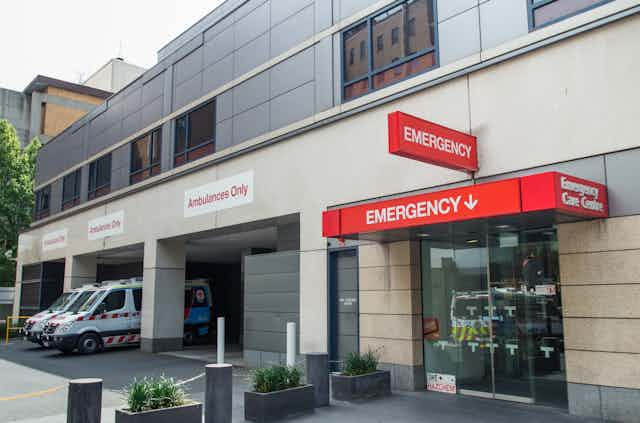The COVID-19 pandemic forced us all to change the way we live. The lockdown altered fundamental aspects of our lives, not only to protect our own health but also the health and lives of others.
Just as Australians have shown a remarkable ability to adapt to a world with COVID-19, so too has Australia’s health system. In a report released today, the Grattan Institute outlines seven key lessons that can help make the health system more effective, efficient and equitable, and better able to deal with future crises.
Lesson 1: telehealth works
Since mid-March, Australians have been able to consult their GP or a specialist from the comfort of their own homes, via phone or video (known as telehealth). Although face-to-face consultations are sometimes still necessary, the pandemic has shown the enormous potential for telehealth to provide more efficient care in many instances, such as for routine appointments or mental health check-ups.
During the pandemic, telehealth was a no-brainer to protect patients and health professionals from getting sick or making others sick. But given its widespread adoption and success, it is also a no-brainer for telehealth to become a permanent fixture of health care in Australia.
The federal government should revise the temporary telehealth Medicare items to ensure they promote continuity of care and make them more appropriate for the longer term, couple them with e-referrals (to replace the museum-era fax machines), and introduce rules to prevent rorting.
Read more: Coronavirus has boosted telehealth care in mental health, so let's keep it up
Lesson 2: out-of-hospital care also works
Alongside telehealth, the pandemic prompted a rapid expansion of hospital-in-the-home care, including new “virtual hospitals”. Many people with chronic health conditions, or who are in rehabilitation or residential aged care, can be monitored by health professionals and given health advice without face-to-face contact, using technologies such as telemonitoring.
Commonwealth and state governments should fund further expansion of these services.
Read more: The 'hospital in the home' revolution has been stalled by COVID-19. But it's still a good idea

Lesson 3: Australia needs new funding arrangements for general practices
Australia’s rigid primary care funding model, in which doctors are paid on a fee-for-service basis, made it hard for GPs to set up new practice models during the pandemic – such as quickly establishing COVID-19 testing clinics or making outreach calls to vulnerable patients.
Governments should remove barriers in the Medicare system to allow for different models of care.
Read more: 4 ways Australia's coronavirus response was a triumph, and 4 ways it fell short
Lesson 4: public and private systems should be more integrated
The pandemic showed the potential for public and private health-care systems to work better together. Private hospitals were set up to deal with the overflow from potentially overwhelmed public hospitals. At the same time, private hospitals effectively came to a halt when governments suspended non-urgent elective surgeries, to free up resources to tackle the pandemic.
Now there is a huge backlog of patients who need elective surgeries. Clearing this backlog should not be a business-as-usual matter. The pandemic provides an opportunity for Australia to move away from the current inconsistent wait-list process, to a standardised, efficient, equitable process with a single wait-list priority system to properly manage elective surgeries.
State governments should also consider negotiating long-term contracts with private hospitals for extra help.
Read more: Elective surgery's due to restart next week so now's the time to fix waiting lists once and for all
Lesson 5: there are gaps in Australia’s pandemic preparedness
Despite Australia’s largely successful response to the pandemic, our preparedness regime was not totally up to scratch. Australia had not contemplated a crisis of this scale, and as a consequence the early response was characterised by reactive policy-making and mixed messages to the public.
Future pandemic planning should include a workforce strategy to support the rapid expansion of health-care capacity; provide a national surveillance approach to quick and accurate reporting of disease data; and ensure that secondary health effects such as mental health problems and domestic violence are built into the plan and managed in the longer term.
Read more: What are the characteristics of strong mental health?
Lesson 6: the health system needs a stronger supply chain
During the pandemic, health workers had to cope with inadequate supplies of testing kits and personal protective equipment (PPE) such as face masks. Problems with Australia’s supply chains hampered ready access to supplies, and the global surge in demand forced Australian health departments to join the global bidding for fast-tracked supplies from overseas.

Australian governments need to strengthen local supply chains, by drawing on a diverse set of suppliers and increasing product standardisation to enable easier substitution of products. The National Medical Stockpile also needs to be reviewed, because it did not have sufficient supplies.
Lesson 7: Commonwealth and state governments can better coordinate primary care
The creation of the National Cabinet improved national coordination in response to the pandemic, as the old fractured federal relationships were temporarily set aside.
Renewed cooperation through primary care agreements, and strengthened Primary Health Networks, could reduce – or, better still, end – the overlap in services provided by the Commonwealth and states, and improve primary care delivery.
The new normal can be better than the old
Australia’s health care must not “snap back” to the old order. The pandemic has shown us a better way. Now reform is needed to transform these temporary improvements into long-term successes.
But reform and a “new normal” won’t just happen automatically. Consumers and clinicians should be engaged now to build on what went well during the pandemic, to ensure our health system is better than it ever was before the pandemic.


